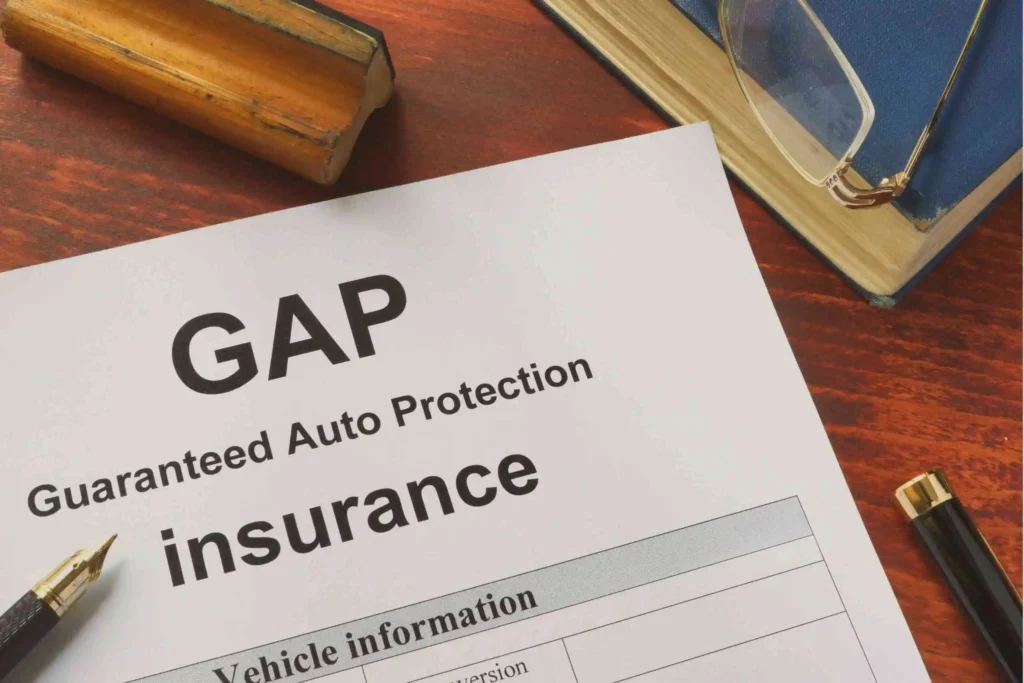Understanding Gap Insurance: How It Protects Your Vehicle Investment

When you purchase a vehicle, it’s an exciting milestone, whether it’s a brand-new car or a used one. However, the financial commitment extends beyond just the initial purchase price. One aspect of vehicle insurance that often gets overlooked is gap insurance. This type of insurance can be crucial in protecting your investment in case of an unexpected loss. In this blog post, we’ll explore what gap insurance is, why you might need it, and how it can benefit you in the event of an accident.
What is Gap Insurance?
Gap insurance, also known as Guaranteed Asset Protection insurance, is a specialized type of auto insurance designed to cover the difference between the amount you owe on your car loan or lease and the actual cash value (ACV) of your vehicle in the event of a total loss.
Actual Cash Value vs. Loan Balance
To understand gap insurance, it’s important to differentiate between the actual cash value of your vehicle and the amount you owe on your loan or lease:
- Actual Cash Value (ACV): The ACV is the market value of your vehicle at the time of the loss. It’s determined based on factors such as the car’s make, model, age, mileage, and overall condition. If your vehicle is damaged or stolen, the insurance company will pay out the ACV.
- Loan or Lease Balance: This is the amount you still owe on your car loan or lease. If you’re financing your vehicle or leasing it, you might owe more than the car’s ACV, especially if you made a small down payment or have been making payments for only a short time.
Gap insurance covers the difference between these two amounts. For example, if your car’s ACV is $20,000 but you owe $25,000 on your loan, gap insurance will cover the $5,000 difference.
Why You Might Need Gap Insurance
Gap insurance can be beneficial in several scenarios. Here are some situations where it could prove particularly valuable:
- New Car Purchases: New cars depreciate quickly, losing value faster than the loan balance decreases. If your new car is totaled or stolen shortly after purchase, gap insurance ensures you don’t end up paying out-of-pocket for the difference.
- Low Down Payments: If you made a small down payment when buying your vehicle, you might owe more than the car’s current value. In case of a total loss, gap insurance covers this disparity.
- Long-Term Loans: Longer loan terms can result in slower equity buildup. If you have a long-term loan, you might not own enough of the vehicle’s value to cover the remaining loan balance if it’s totaled.
- High Mileage or Older Vehicles: Vehicles that have high mileage or are older may depreciate faster than new cars. Gap insurance helps protect against the loss of value that occurs more rapidly in these situations.
How Gap Insurance Works
To illustrate how gap insurance functions, let’s walk through a hypothetical example:
Imagine you purchase a new car for $30,000, and you finance it with a $27,000 loan. After six months, you’re in an accident, and the car is declared a total loss. The insurance company determines that the ACV of your car is now $22,000.
Without gap insurance, you would be responsible for paying the difference between the ACV and your loan balance. In this case, you owe $27,000 on the loan but only receive $22,000 from the insurance company, leaving you with a $5,000 gap to cover.
With gap insurance, the insurer pays the $5,000 difference, so you don’t have to cover this cost out of pocket. This protection helps prevent financial strain and ensures you aren’t left with a debt after losing your vehicle.
Is Gap Insurance Right for You?
Deciding whether to purchase gap insurance depends on your individual circumstances and preferences. Here are some factors to consider:
- Loan Terms: If you have a long-term loan or lease, gap insurance may be worth considering to protect against potential gaps between the loan balance and the vehicle’s value.
- Depreciation: Evaluate how quickly your vehicle is depreciating. New cars and those with low down payments or high mileage may benefit more from gap insurance.
- Insurance Coverage: Check if your auto insurance policy already includes gap coverage or if it’s available as an add-on. Some policies offer gap insurance as part of their coverage package, while others may require a separate policy.
- Cost vs. Benefit: Compare the cost of gap insurance with the potential financial risk of not having it. Gap insurance is generally affordable and can provide significant peace of mind in case of a total loss.
How to Obtain Gap Insurance
If you decide that gap insurance is right for you, there are several ways to obtain it:
- Through Your Auto Dealer: Many auto dealerships offer gap insurance when you purchase or lease a vehicle. While convenient, ensure you compare the cost and coverage options with other sources to get the best deal.
- Through Your Auto Insurance Provider: Some auto insurance companies offer gap insurance as an add-on to your existing policy. Contact your insurance provider to inquire about availability and pricing.
- Through Third-Party Providers: Independent companies specialize in gap insurance and may offer competitive rates and coverage options. Research different providers and read reviews to ensure you choose a reputable company.
Gap insurance provides valuable protection for your vehicle investment by covering the difference between your car’s actual cash value and the amount you owe on your loan or lease in the event of a total loss. Whether you’ve purchased a new car, have a low down payment, or are dealing with rapid depreciation, gap insurance can help prevent financial strain and ensure you’re not left with an unexpected debt.
As you consider whether gap insurance is right for you, weigh the benefits against your specific circumstances and evaluate your options carefully. With the right coverage, you can enjoy greater peace of mind and financial security, knowing that your vehicle investment is protected.









